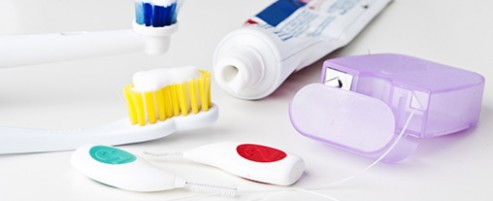Whats New in Pain Free Dentistry ?
Dentists have been leaders in the field of anesthesia since the 1800s. In 1846, Dr. William Morton was the first doctor to extract a tooth using ether as a general anesthetic. Since then, anesthesia has come a long way. Before general anesthesia existed, people would routinely undergo surgery until they lost consciousness from the pain. Happily, today's methods of anesthesia are very effective.
Local anesthesia is the most common form of anesthesia used in dentistry. For many procedures, the dentist injects a local anesthetic into the area that needs to be numbed. This is called an infiltration injection. Sometimes the injection is done to numb a large area, away from where the injection is given. This is called regional anesthesia or a "block."
Some research has focused on giving local anesthetics without needles. These systems aren't popular yet, but they are promising. One system consists of a patch applied to the gum. The patch contains a local anesthetic. The drug enters the skin directly. After the patch is removed, a dentist can give a virtually painless injection at that spot or perform certain dental procedures without having to give an injection. This can be useful for a small filling or a deep cleaning of the gums.
Occasionally, people will not get numb after receiving the usual injection of local anesthetic. Instead, they can receive another type of shot. This is called an intra-osseous injection. A tiny drill makes a hole in the gum. Then, a needle is inserted into the jawbone. Anesthetic is injected into the bone.
This type of anesthesia is somewhat uncomfortable to receive. It is not commonly used. It is typically used in the lower jaw. It might not numb the gum tissue well enough to be used for removing teeth, but it can be used for fillings and root canals.
THE MAGIC WAND : Latest Painfree injection method is known as "the wand." It uses a computer-controlled delivery system. The source of most discomfort from local anesthesia injections is not the needle. It is the flow of the anesthetic into the tissues of the mouth. The wand controls the flow. This allows the correct amount of anesthetic to be delivered at a painless rate.
The wand does not look like a a needle at all, but just like a pen. It is a great method to deliver Painfree injections.
Ask YOUR DENTIST if he is a Pain-Free Magic Wand Dentist !!
SEDATION : Besides local anesthesia, various medicines may be used to reduce anxiety. This is commonly called conscious sedation. It is useful for people who are fearful or anxious. Sedative drugs may reduce anxiety and fear so that people can have dental treatment. They also can cause short-term memory loss, so people don't remember most of the procedure.
Sedatives come in various forms. Nitrous oxide is an odorless gas (commonly called "laughing gas"). Some sedatives may come in pill or liquid form. Others are intravenous medicines, meaning they are injected into a vein.
Dentists who provide sedation to their patients must be specially trained. They must have specific types of training and experience in order to provide different types and levels of sedation. Almost every state has laws and rules about this.
Oral and maxillo-facial surgeons learn to provide sedation, up to and including general anesthesia, as part of their hospital training. Dental anesthesiologists also receive this training. They are dentists who have completed a two-year residency in anesthesia. Some general dentists learn about sedation as part of their hospital training. Others take courses in sedation after they graduate from dental school.
Most dentists are not trained in sedation. Ask your dentist about his or her training and experience in sedation and anesthesia.



